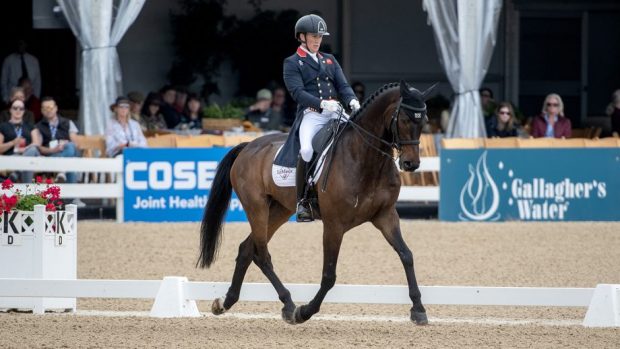A horse who is too confident over show jumps for his own good may soon start rushing fences.
Lulu and Harry
“I bought Harry from a dealer as a four-year-old. He had been brought over from Ireland and he’d been sat on, but nothing more.
“Once Harry turned five I began preparing him for his first pre-novice horse trials. He is a very easy, straightforward horse to ride and has a nice way over his jumps. However, he gets very keen and over-confident and has recentlystarted rushing his fences.
“At home we do lots of work over placing poles and grids, which makes it hard for him to rush. But, this is not the real-life situation we will be faced with when we attempt anything at competitions. Jumping a course of fences is a very different experience and that is why we have come for three days’ training with Steve.
“It is only Harry’s second visit here, so it will be very interesting to see how he goes this time around.”
Overconfident
Harry is still green. Lulu has done a good job bringing him on and he is very confident – so much so he is getting to be a bit of a know-all.
He approaches his fences with an enormous amount of confidence and really takes them on. But he has started taking Lulu to the fences too quickly and on his terms, rather than hers.
Controlling Harry is becoming difficult four to five strides from the fence. This sometimes results in him going in too strong, only to back off the fence and lose impulsion at the very moment when he should be increasing it.
A horse’s last three strides need to be going forward, and the last stride should be the strongest. Lulu needs to work on maintaining a constant rhythm with Harry.
Challenging Harry
Harry doesn’t listen to Lulu 100% because he thinks he knows it all already. He is “carting” her to fences and has started rushing the easy ones and backing off those that are more of a challenge. He attaches more importance to the fence than the approach.
One way of dealing with horses like this is to call their bluff. If a horse is taking charge, don¨t let him do it. Every time he thinks about running away with you, pull up on the spot and stop – asif to say “I’m not having that”.
Over familiarity
When Harry runs away, he’s breaking his rhythm and dictating the pace himself.
A horse doesn’t know how fast he needs to approach a fence. Different types of fence all need different approaches and jumping techniques. For example, jumping upright planks is very different from jumping a big, strong parallel. The latter requires horse and rider to back off the front rail, keeping enough impulsion to get over the back one. Far less impulsion is needed to jump planks.
Harry quickly gets familiar with fences so it is important to mix his jumps as much as possible. Another training tip is to circle in front of the fence, vary the order and, if possible, the direction in which you tackle the fences – basically, set the horse a challenge and keep his mind active, to prevent him anticipating your next move.


